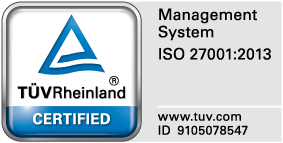Minimum Tax – a new obligation for companies, especially those with losses and low profitability
Changes in the Polish tax system constantly force entrepreneurs to adapt and reconsider their financial strategies. One of the latest and most significant changes is the introduction of a minimum income tax, which raises many questions and concerns among taxpayers. This regulation, aimed at increasing budget revenues, directly impacts entities that report losses or operate with low profitability. What are the main principles of this tax, and how will it affect the operations of companies?
What is the minimum tax?
The minimum tax has been introduced to ensure taxation of companies which, despite generating significant revenues, report low taxable income or even tax losses. Previously, such entities could, under certain conditions, avoid paying income tax. The new tax eliminates this possibility by introducing a minimum level of taxation, regardless of the financial results of the company.
This tax applies to both Polish companies and foreign enterprises operating in Poland.
Who is affected?
The minimum tax is designed for companies that:
- Report a tax loss.
- Have a profitability ratio (calculated as the ratio of income to revenues other than those from capital gains) of less than 2%.
Exceptions include: companies starting their business activities, small taxpayers, financial institutions, taxpayers whose revenues in the tax year are at least 30% lower than those achieved in the previous year, companies whose shareholders are exclusively individuals (under certain conditions), companies undergoing restructuring, and entities operating in specific sectors, such as agriculture, international transport using sea or air vessels, as well as mining.
How is the minimum tax calculated?
The minimum tax amounts to 10% of the tax base, which consists of the following elements:
- 1.5% of the revenue value from sources other than capital gains,
- Financing costs for liabilities incurred with related entities (above a specified limit),
- Costs of acquiring certain services from related entities,
- Costs of fees and charges for the use or right to use copyrights, related rights, licenses, and know-how acquired from related entities,
- Costs of transferring insolvency risks from loans, other than those provided by banks or cooperative savings and credit unions, incurred with related entities (above a specified limit).
This approach acts as a “filter” for the company’s finances, minimizing the impact of accounting manipulations or excessive tax optimization.
Taxpayers can also opt for a simplified method of determining the tax base, which then amounts to 3% of the revenues derived from sources other than capital gains in the given calendar year.
A crucial aspect of the minimum tax structure is that the amount paid for a given tax year can be deducted from the income tax calculated under standard rules in the three consecutive tax years immediately following the year for which the minimum tax was paid. Thus, if the taxpayer does not incur losses in subsequent years, he can “recover” the paid minimum tax by reducing his liability under the standard income tax rules.
Consequences for low-profitability companies
Low-margin companies – such as those in retail, logistics, or industries where competitive advantage depends on costs – will feel the effects of this tax particularly strongly. Their business model often relies on low margins, making them vulnerable to additional fiscal burdens.
These companies frequently invest in development, modernization, and infrastructure maintenance, which translates into lower net profits. The minimum tax could weaken their ability to reinvest profits and expand their operations.
How to prepare?
To minimize the risks associated with the new tax, entrepreneurs should:
- Analyze cost structures – Review whether specified expenses can be reduced or managed more effectively to increase profitability.
- Monitor financial indicators – Regular analysis of financial results will help avoid to become unexpectedly a payer of the minimum CIT.
- Consider restructuring – For low-margin companies, this may be an opportunity to reorganize business processes more efficiently.
- Consult experts – Tax specialists can help interpret the new regulations and propose solutions tailored to the specifics of the business.
Is the minimum tax fair?
The introduction of the minimum tax is controversial. Supporters emphasize that it aims to ensure fair participation of all entities in financing the state, particularly large companies that have effectively avoided taxation in the past. Critics, on the other hand, argue that additional burdens may harm companies facing difficulties, especially in the context of global economic uncertainty.
Summary
The minimum tax is a significant change in the Polish tax system that requires new approaches to finance management in companies. While it may pose a challenge, it also serves as an impetus for more efficient resource management and risk avoidance related to low profitability. It is worth making the necessary preparations to minimize the impact of this burden on operations and maintain competitiveness in the market.
Consult experts and ensure that your company is ready for the upcoming changes – this is the key to success in the new tax reality.
If you have any questions regarding this topic or if you are in need for any additional information – please do not hesitate to contact us:
CUSTOMER RELATIONSHIPS DEPARTMENT

ELŻBIETA
NARON-GROCHALSKA
Head of
Customer Relationships
Department /
Senior Manager
getsix®
Group
***














